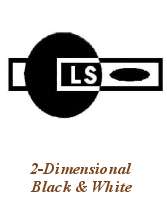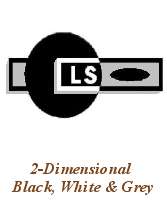

|
|
|
|
|
![]() Additional information is helpful, including size (of the document and of the watermark itself), layout orientation and spacing, and any shading requirements.
Additional information is helpful, including size (of the document and of the watermark itself), layout orientation and spacing, and any shading requirements.
![]() For example, the size of the document for which the watermark is intended will help to determine how large (or small) the watermark might need to be.
For example, the size of the document for which the watermark is intended will help to determine how large (or small) the watermark might need to be.
![]() If the watermark is intended to appear on a small sized item, such as a bank or payroll check, it will need to be smaller and spaced closer together than if it is intended to appear on an eight and one-half by eleven inch sheet.
If the watermark is intended to appear on a small sized item, such as a bank or payroll check, it will need to be smaller and spaced closer together than if it is intended to appear on an eight and one-half by eleven inch sheet.
![]() If the proposed design is a complex one, with a large amount of fine detail, the watermark image will need to be made large enough for the engraving tools to reach all the detail elements.
If the proposed design is a complex one, with a large amount of fine detail, the watermark image will need to be made large enough for the engraving tools to reach all the detail elements.
![]() Watermark images can be two dimensional (i.e. black and white, - or - black, grey and white), or they can be three-dimensional (i.e. black, white and a range of graduated greys in between). It is important for the customer, at the very beginning of the project, to identify the type of shading that is required, because the method of converting the artwork to data that can be used by the engraving machine depends on the type of (or lack of) shading.
Watermark images can be two dimensional (i.e. black and white, - or - black, grey and white), or they can be three-dimensional (i.e. black, white and a range of graduated greys in between). It is important for the customer, at the very beginning of the project, to identify the type of shading that is required, because the method of converting the artwork to data that can be used by the engraving machine depends on the type of (or lack of) shading.



![]() The customer should keep in mind that the more complex watermark designs are not necessarily the most effective. A simple design, with 3 dimensional shading, might be more effective than a complex one with 2 dimensional black and white.
The customer should keep in mind that the more complex watermark designs are not necessarily the most effective. A simple design, with 3 dimensional shading, might be more effective than a complex one with 2 dimensional black and white.
![]()